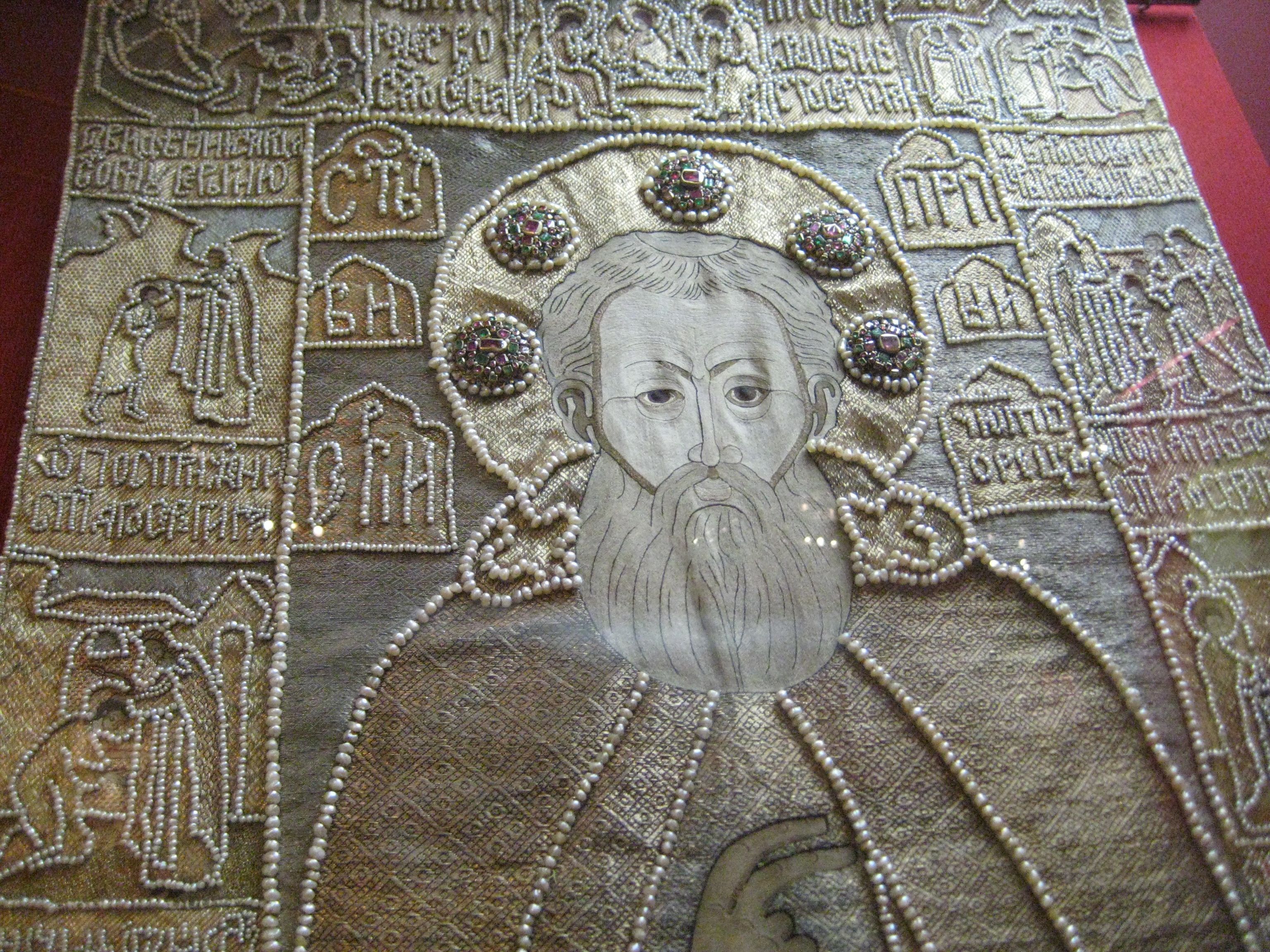The Art of Russian Pearl Embroidery: Techniques and Traditions
New to Luneville embroidery?
Start with the chain stitch—my free visual guide shows you exactly how
Pearl embroidery has been an essential part of Russian textile art for over a thousand years, celebrated for its intricate designs and symbolic significance. This ancient craft adorned religious garments, royal robes, and ceremonial objects, using pearls to create luxurious and meaningful works of art. With numerous techniques developed over centuries, pearl embroidery offers a variety of methods for integrating pearls into textiles. In this article, we explore the history of pearl embroidery in Russia and present some of the most distinctive techniques that have shaped this rich tradition.
A Glimpse into the History of Pearl Embroidery
The history of pearl embroidery in Russia dates back to at least the 10th century, when pearls were highly valued for their symbolism of purity and spirituality. Freshwater pearls, harvested from the rivers of northern Russia, were an essential part of decorative arts, especially for the church and aristocracy.
By the 14th to 17th centuries, pearl embroidery had reached its peak. It was widely used to decorate church vestments, royal attire, and ceremonial objects. Elaborate designs featured pearls combined with gold and silver threads, creating intricate patterns and textures that reflected the high status of their wearers. However, with the onset of industrialization and changing fashion in the 18th century, pearl embroidery began to decline. Nonetheless, efforts to document and preserve the techniques have kept the craft alive, allowing its legacy to inspire contemporary artisans.
Techniques of Russian Pearl Embroidery
The beauty and sophistication of pearl embroidery stem from the diverse techniques developed over centuries. Each method was designed to highlight the unique qualities of pearls, incorporating them into intricate designs on fabrics ranging from linen to velvet and brocade. Below are some of the most distinctive techniques that highlight the creativity and precision of pearl embroidery.
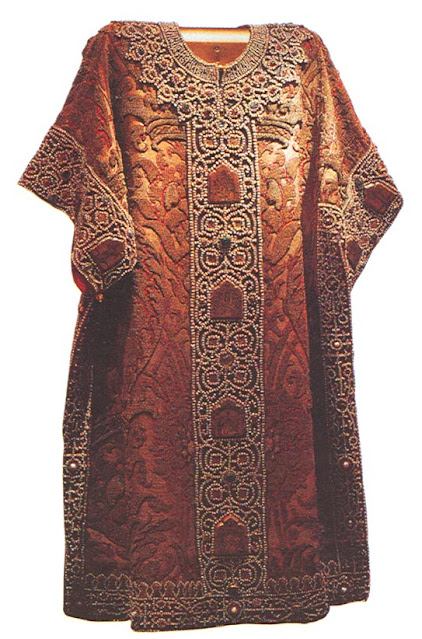
Pearl Couching
One foundational technique is pearl couching, where pearls are sewn directly onto fabric using fine thread. This method creates clean, delicate lines or patterns and was often used to frame larger designs or add texture to religious garments and royal robes.
Pearl Stringing
In pearl stringing, pearls are threaded together and then sewn onto fabric in continuous lines, forming geometric patterns or decorative borders. This technique allowed artisans to create fluid, symmetrical designs, often seen in ceremonial attire.
Pearl Mosaic
Pearl mosaic refers to the technique of placing pearls of varying sizes and shapes close together to form dense patterns, mimicking the appearance of a mosaic. This method was frequently used for religious items, like icon covers, where pearls formed part of elaborate decorative scenes.
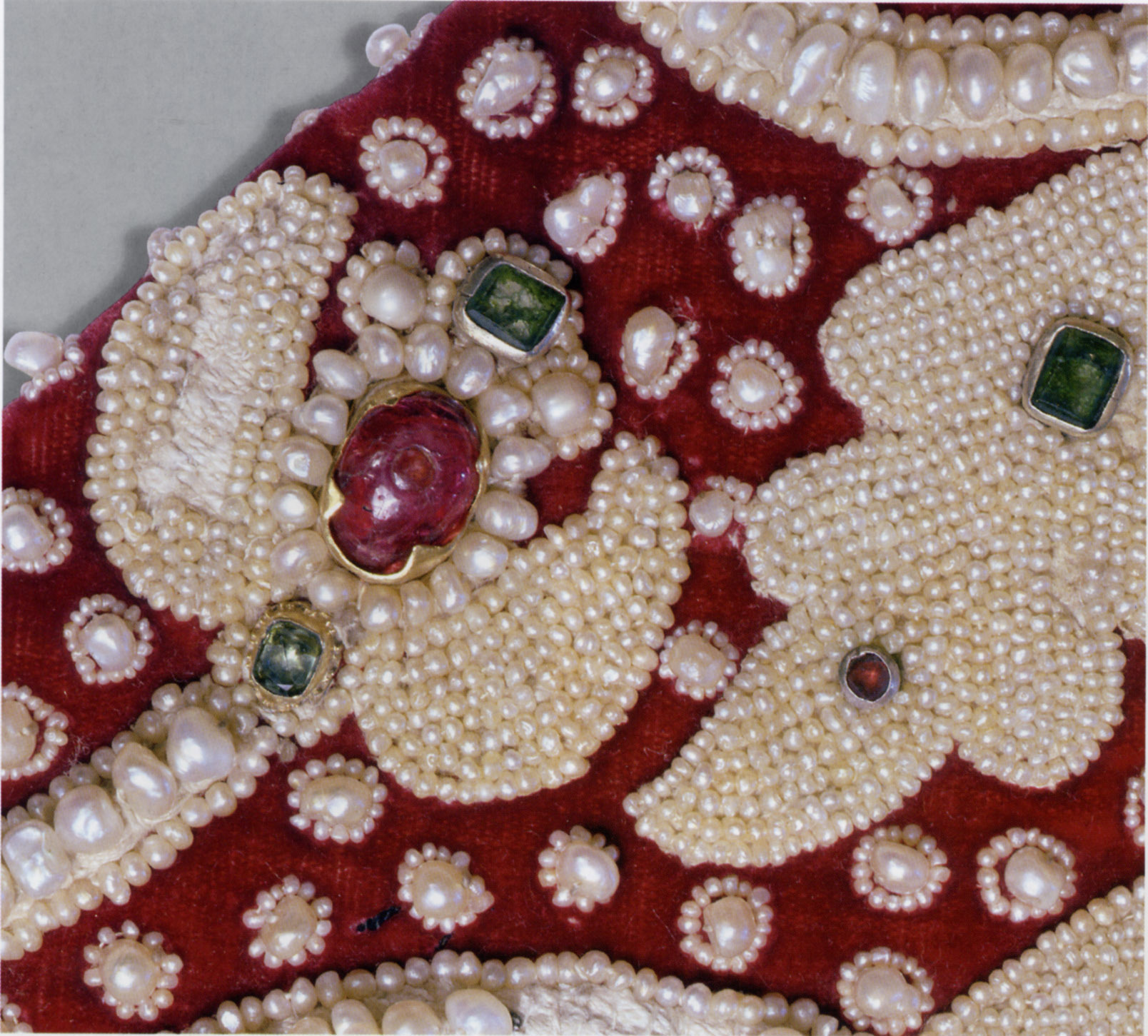
Pearl Relief Embroidery
Pearl relief embroidery adds dimension to designs by layering pearls to create raised, textured surfaces. By combining pearls with metallic threads, artisans could create intricate, three-dimensional motifs, commonly found in royal garments and ceremonial textiles.
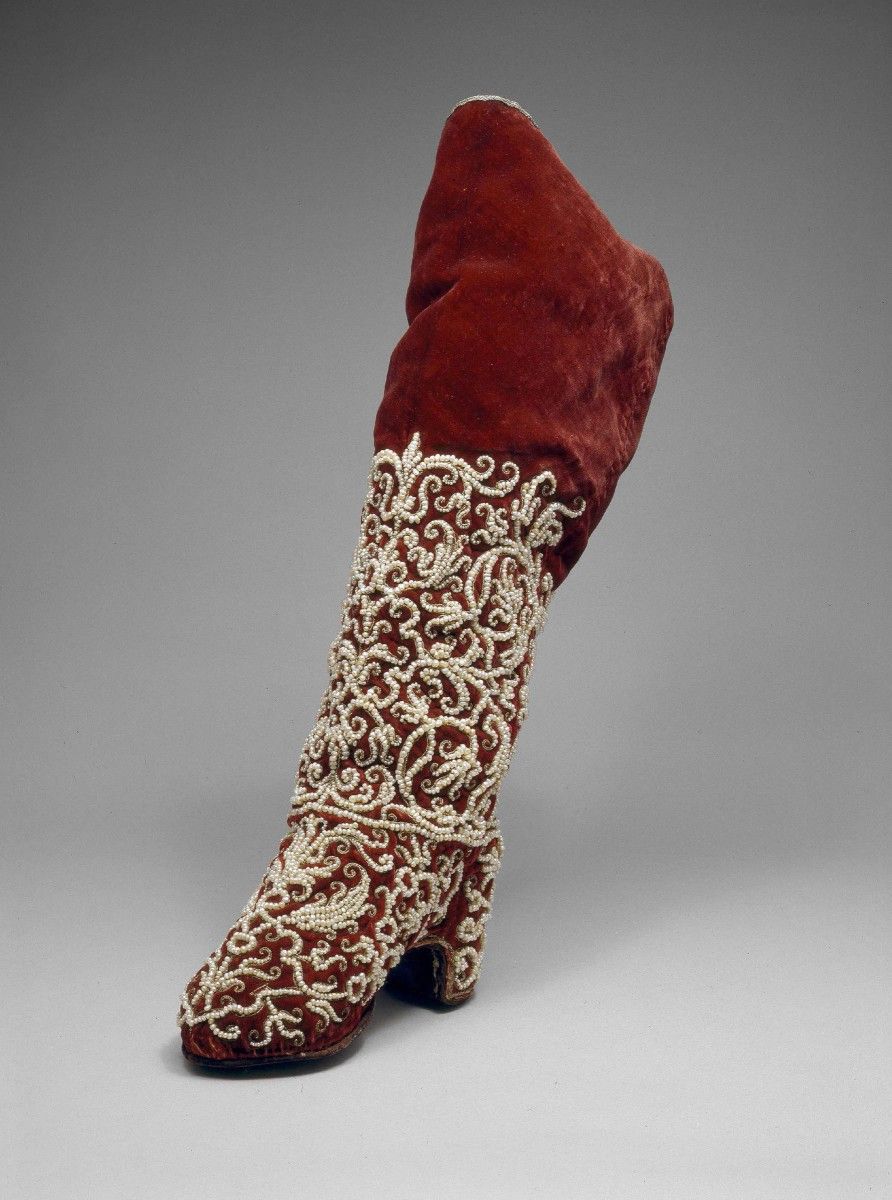
Pearl Setting
Pearl setting is one of the most refined techniques in Russian embroidery. Pearls are carefully sewn onto fabric or cords, secured in place to create structured patterns. In this technique, pearls are "seated" onto the fabric, much like gemstones are set in jewelry, ensuring they remain stable and secure. This method was widely used in religious garments and royal accessories, where the precision and durability of the technique were paramount.
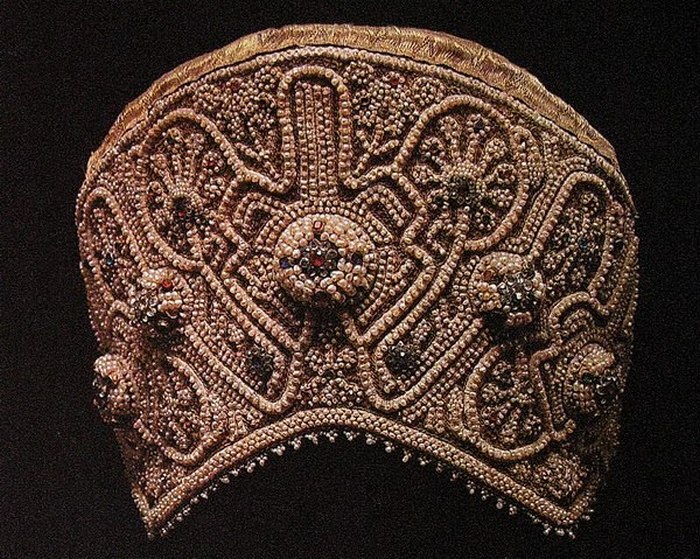
Pearl Embellishment on Headdresses
Pearls were also a common feature in traditional Russian headdresses, where they were combined with other materials like beads and metal filigree to create intricate, luxurious designs. These headdresses were often worn for weddings or ceremonial events, symbolizing wealth and status.
Pearl Embroidery on Velvet and Brocade
In this technique, pearls were embroidered onto rich fabrics such as velvet and brocade. The soft, luxurious texture of the fabrics emphasized the glow of the pearls, creating garments that shimmered in light. This method was popular in royal and aristocratic attire, where richness in both fabric and decoration was highly prized.
Cultural and Artistic Legacy of Pearl Embroidery
Pearl embroidery has long reflected the artistic and cultural identity of Russia, symbolizing wealth, purity, and spirituality. The intricate techniques developed over centuries not only served as expressions of personal status but also held deep religious significance. Though its prominence has faded, the craft continues to inspire contemporary textile artists who seek to preserve and reinterpret these historical techniques.
Russian pearl embroidery remains a testament to the skills of artisans who transformed natural materials into breathtaking works of art. Today, as heritage crafts gain renewed interest, pearl embroidery offers an endless source of inspiration for modern creators, allowing a centuries-old tradition to evolve and adapt to contemporary artistic expressions.
Russian pearl embroidery is a rich and complex art form, characterized by its diverse techniques and the careful craftsmanship behind each piece. From pearl couching to the delicate pearl setting technique, these methods showcase the creativity and dedication of Russian artisans. While its role in modern fashion may have changed, pearl embroidery continues to inspire and remains a valuable part of artistic heritage. For those who appreciate traditional crafts, pearl embroidery offers a fascinating glimpse into the artistry of the past and its enduring potential for the future.
For a closer look at how pearl embroidery intersected with traditional Russian jewelry, explore my recent article on the “ozherelok” — a historical multi-strand necklace that blends textile and beadwork traditions. Read more →
Written By
Ksenia Semirova
MA Textiles
An experienced hand embroidery and textile artist based in Hove, UK. Professionally practicing since 2021, mastering various techniques.
Also a fine artist and visual researcher, exhibiting her works across the UK and internationally.
Join my mailing list
Get the latest and greatest updates to your inbox!

